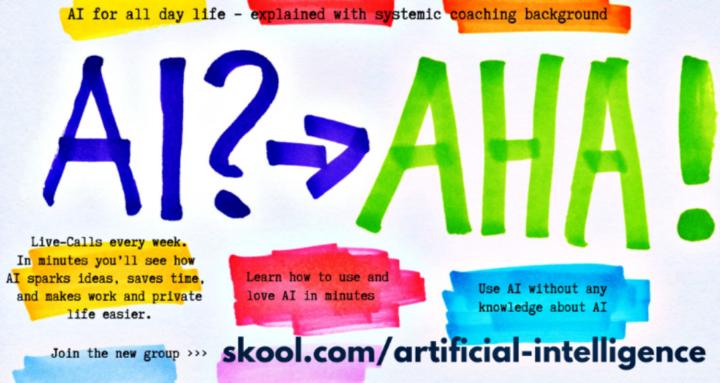7d • Human-Centered AI
Task Specific Assistants – Chat, Code, and Image
Task Specific Assistants – Chat, Code, and Image:
Task-specific assistants are the most commercially deployed form of artificial intelligence today. Unlike general-purpose AI models, they are optimized for single-use cases: writing, coding, or generating images. These systems excel not because they understand deeply, but because they are tightly scoped, highly trained, and paired with user interfaces that drive productivity. Chat assistants process language tasks like summarizing or replying. Code assistants predict useful program logic from context. In doing so, they reduce cognitive load, accelerate boilerplate generation, and help developers explore unfamiliar frameworks without starting from scratch.
Explained for People without AI-Background
- A task-specific assistant is like a smart helper trained for one job, such as writing, coding, or drawing.
- It doesn’t understand the world, but it produces useful results within its focused task.
- These assistants act fast and fluently when the request fits their design.
Chat Assistants: Language Tasks On Demand
- Pretrained Transformers – Use large-scale language models like ChatGPT, Claude, or Gemini to complete, summarize, translate, and restructure text.
- Prompt-Aware – Align style and tone with instructions using system prompts and dialog context.
- Grounded Retrieval – Integrate RAG (retrieval augmented generation) for fact-based answers in enterprise tools.
- Modal Integration – Embedded into email, CRM, document editors, or browsers as in-place assistants.
Code Assistants: Precision Autocompletion and Generation
- Token Prediction – Trained on large corpora of source code to predict syntactically valid completions.
- Multi-Language Support – Handle Python, JavaScript, Java, TypeScript, and more with framework awareness.
- Inline Context Awareness – Suggest logic, generate test cases, and refactor based on full file and cursor position.
- Deployment – Delivered via IDE plugins and browser extensions for low-latency in-editor experience.
Image Assistants: Prompt To Visual Asset
- Text-To-Image Models – Use diffusion (Stable Diffusion) or transformer-based (DALL·E) architectures to render images from textual descriptions.
- Style Conditioning – Adapt to keywords specifying mood, color, angle, lighting, or visual genre.
- Generation Use Cases – Thumbnails, branding mockups, character concepts, UI ideation, storyboarding.
- Ecosystem – APIs, canvas UIs, Discord bots, and local generation engines support multiple workflows.
Task Design Matters
- Alignment – Use instruction tuning and human feedback to encourage safe, helpful outputs.
- Inference Speed – Optimize for responsiveness through quantization, caching, or GPU acceleration.
- Failure Modes – Hallucination (chat), broken logic (code), distorted anatomy (image); mitigated through filtering and few-shot prompting.
Data and Fine-Tuning
- Pretraining Scale – Models originate from billions of tokens across domain-specific datasets.
- Customization – Enterprises fine-tune assistants on private corpora or apply adapters for branded behavior.
- Feedback Loops – Reinforcement and human-in-the-loop pipelines improve performance over time.
Interface and Interaction
- UX Role – Assistants are co-pilots, not oracles. Effective interfaces highlight transparency, control, and editability.
- Trust Building – Use of references, error reporting, and undo options fosters responsible adoption.
- Feedback Hooks – Ratings, edits, or flagged outputs guide ongoing model refinement.
Common Use Contexts
- Chat – Productivity tools, customer support, drafting, and education.
- Code – Software development, DevOps, low-code tooling, technical documentation.
- Image – Creative prototyping, marketing assets, illustration, instructional design.
Related Concepts You’ll Learn Next in this Artificial Intelligence Skool-Community
- Prompt Engineering – Instruction Patterns for Assistants
- Retrieval-Augmented Generation – Factual Grounding For Outputs
- Evaluation – Hallucination, Usefulness, Safety
Internal Reference
Narrow AI – ANI
1
0 comments

skool.com/artificial-intelligence
Artificial Intelligence (AI): Machine Learning, Deep Learning, Natural Language Processing NLP, Computer Vision, ANI, AGI, ASI, Human in the loop, SEO
Powered by



